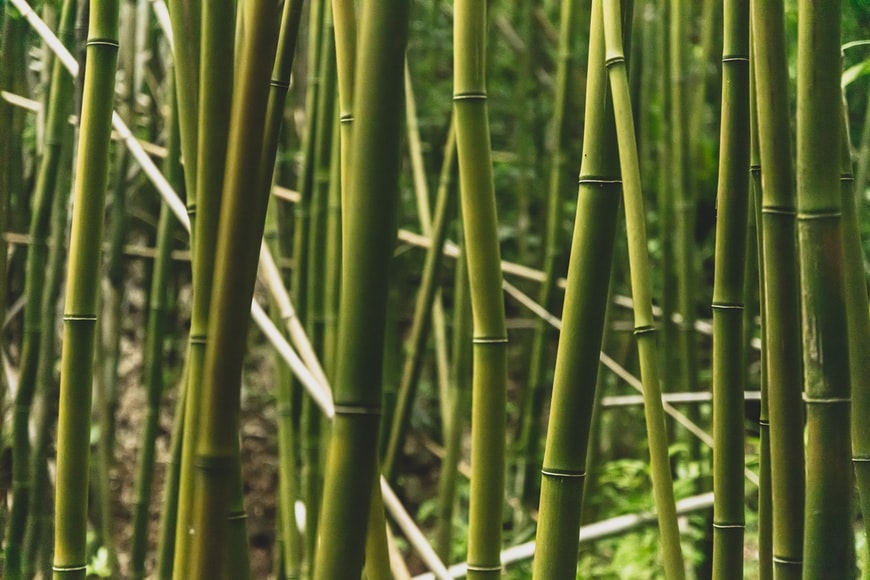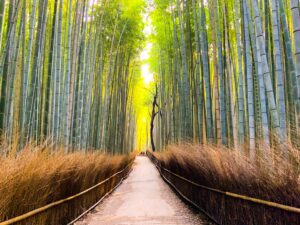5 interesting facts about bamboo you (might) not have known

Whenever the word bamboo is mentioned, probably the first thing that comes to mind is the tall, hard bamboo stalks followed by a giant panda happily munching away at them. After all, bamboo makes up the majority of their diet, so these images really aren’t far from reality. Not only do they feast on the leaves, but they can also spend a significant part of their day nibbling on the stalks too. However, that’s far from the only thing you ought to know about bamboo. Here are 5 interesting facts about bamboo worth knowing!
-
Bamboo is not a tree
Looking at the woody bamboo stalks stretching upwards, one might be tempted to classify them as trees. After all, dense bamboo forests are not uncommon to subtropical Asia. Bamboo, however, is not a tree but a plant (botanically speaking), specifically a grass from the Poaceae family. These are a very diverse species, with almost 1,500 different sub-species of bamboo growing all over the world, with variations in appearance and maximum height.

Bamboo forest, Kyoto, Japan
-
Bamboo has surprising versatility
Few plants can be used in more ways than bamboo. Thanks to its properties, bamboo can be used to make virtually anything, from disposable cutlery and straws to furniture and an entire liveable house. Bamboo can be processed in a variety of ways; bamboo fibre is used extensively in both the fashion and construction industries. An excellent example of this is bamboo Venetian blinds, with their outstanding shading performance and also their thermo-regulating features, compared to other materials.
Because of these thermo-regulating features, bamboo is frequently used in roof construction, especially in tropical areas. Thick bamboo stalks, which can be over 40 m long, are also commonly used in the construction industry.
-
It grows like a weed, kinda
If you are an impatient gardener, bamboo is just the thing for you. Many species of bamboo can grow up to 5 to 15 cm per day, with some species being quite the record-breakers – and able to grow almost 1 m in a single day. Bamboo therefore rightly holds the title of the fastest growing terrestrial plant.
-
A truly effective eco-material
Bamboo is often called an eco-material. Not only can it be recycled very well, but bamboo absorbs up to 5× more CO2 while generating 35% more oxygen than the equivalent amount of trees. Bamboo forests thus make a significant contribution to reducing greenhouse gas emissions thanks to this stellar performance.

Bamboo is likewise an excellent material for manufacturing Venetian blinds
-
It can grow (nearly) anywhere
In addition to its other qualities, let’s not forget that bamboo can be grown virtually anywhere, even in relatively polluted and degraded soil. Bamboo is also quite low-maintenance, as it contains various antibacterial substances that repel pests. It’s simply stunning where bamboo can be grown. Although tropical and subtropical zones are the natural habitat for most species of bamboo, some thrive even in our temperate climates. Some species growing in the Himalayas aren’t even bothered by the high altitude of nearly 4,000 m a.s.l.
These above-mentioned features and much more make it clear that we are not exaggerating by calling bamboo the plant of the future. Even considering the fact that bamboo cultivation has an ancient history in countries like Indonesia and China. We may often not even realise where this material can be found around us. Let’s do an experiment – try to find everything in your home or in your neighbourhood made from bamboo, and discover all the bamboo products you might be using daily.
